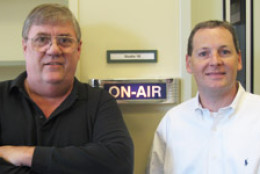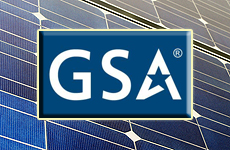Hubbard Radio Washington DC, LLC. All rights reserved. This website is not intended for users located within the European Economic Area.
On Air: Federal News Network
National Oceanic and Atmospheric Administration
-
The National Oceanic and Atmospheric Administration has launched a federal Web site meant to answer questions about the response to the B-P Gulf oil spill. Agency officials say it\'s designed as a one-stop shop for detailed near-real-time information about the response to the Deepwater Horizon incident, incorporating data from the various agencies that are working together to tackle the spill. Originally designed for responders, who make operational decisions regarding the disaster, the web site integrates the latest data on the oil spill\'s trajectory, fishery closed areas, wildlife and Gulf Coast resources into one customizable interactive map. The web site is http://www.GeoPlatform.gov/gulfresponse.
June 17, 2010 -
A new place users can go to map the Gulf oil spill.
June 16, 2010 -
New online tool created by NOAA and the EPA shows real time changes.
June 15, 2010 -
NASA and its partners are making an effort to save both time and lives with new technology. Details from WTOP\'s Kristi King and NASA\'s George Theodorakos
June 09, 2010 -
One the world\'s largest supercomputers is being used to forecast, in 3D, how BP\'s massive Gulf of Mexico oil spill will affect coastal areas. Blue Waters Program director Irene Qualters explains how it works.
June 03, 2010 -
A new ocean observing system from the National Oceanic and Atmospheric Administration now offers mariners free real-time information on water level, wind, and weather conditions for the Sabine-Neches Waterway of Beaumont and Port Arthur, Texas. The so-called PORTS system provides observations of tides, currents, water and air temperature, barometric pressure, and wind speed, gusts and direction through an easy-to-use Web portal and by phone. NOAA officials say the system will significantly reduce the risk of vessel groundings and increase the amount of cargo moved though the waterway by enabling mariners to safely use nearly every inch of a channel. The system also allows big ships to time their arrivals and departures more efficiently. There are 19 such other PORTS systems located throughout the nation. A new ocean observing system from the National Oceanic and Atmospheric Administration now offers mariners free real-time information on water level, wind, and weather conditions for the Sabine-Neches Waterway of Beaumont and Port Arthur, Texas. The so-called PORTS system provides observations of tides, currents, water and air temperature, barometric pressure, and wind speed, gusts and direction through an easy-to-use Web portal and by phone. NOAA officials say the system will significantly reduce the risk of vessel groundings and increase the amount of cargo moved though the waterway by enabling mariners to safely use nearly every inch of a channel. The system also allows big ships to time their arrivals and departures more efficiently. There are 19 such other PORTS systems located throughout the nation.
May 31, 2010 -
NASA and its partners are making an effort to save both time and lives with new technology.
May 29, 2010 -
NOAA\'s National Geodetic Survey - the official U.S. government source for determining precise latitude, longitude and elevation - is undergoing a modernization effort that takes into account advances in GPS and other technologies. chief geodesist at NOAA, Dr. Dru Smith, tells us where we are with that.
May 21, 2010 -
A new satellite imagery program -- not quite ready for launch -- has been put to the test since the massive oil spill in the Gulf of Mexico.
May 11, 2010 -
The National Oceanic and Atmospheric Administration\'s GOES-13 spacecraft has become the official GOES-EAST satellite, now perched some 22,300 miles above the equator; a prime location to spot potentially life-threatening weather affecting the eastern half of the nation, including tropical storm activity in the Atlantic or the Gulf of Mexico. NOAA officials say, just in time for the 2010 hurricane season, they now have one of the newest and most technologically advanced satellites closely tracking storms - from when they develop to when they dissipate. The GOES-13 satellite replaced GOES-12, which NOAA is shifting to provide coverage for South America, as part of the Global Earth Observation System. GOES-13, launched in May 2006, is the first of three new NOAA geostationary environmental satellites in orbit.
April 19, 2010 -
NASA has successfully completed the first science flight of the Global Hawk unpiloted aircraft system over the Pacific Ocean. The flight was the first of five scheduled for this month\'s Global Hawk Pacific, or GloPac, mission to study atmospheric science over the Pacific and Arctic oceans. The Global Hawk is a robotic plane that can fly to altitudes above 60,000 feet, and as far as 11,000 nautical miles. Operators pre-program a flight path, then the plane flies itself for as long as 30 hours. GloPac researchers plan to directly measure and sample greenhouse gases, ozone-depleting substances, aerosols, and constituents of air quality in the upper troposphere and lower stratosphere. During its inaugural flight, the plane flew approximately 45-hundred nautical miles. The mission is a joint project with the National Oceanic and Atmospheric Administration.
April 12, 2010 -
Small scale energy efficiency projects show what can be done
December 10, 2008





